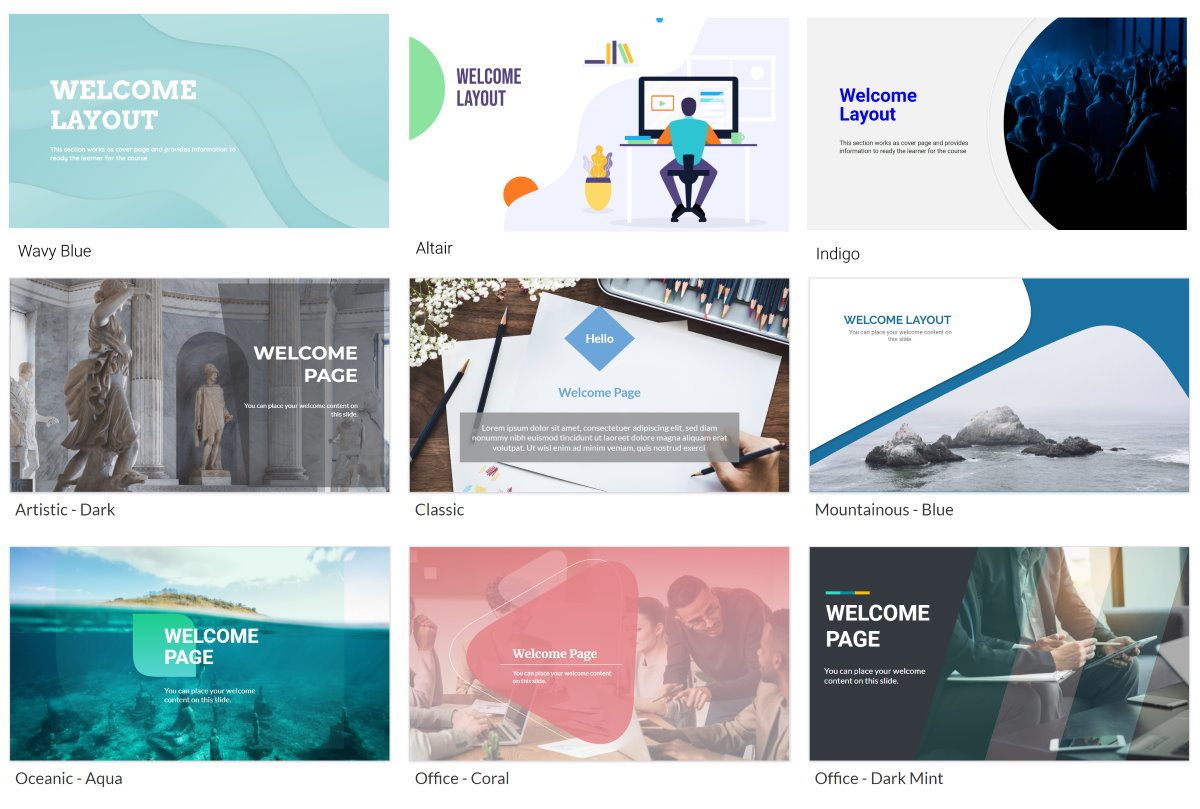How To Effectively Use eLearning Templates
Coming up with engaging eLearning content is already time-consuming—it only gets worse when you factor in the design elements. It takes time to create a clean, user-friendly, professional eLearning course. In an effort to cut down on costs, many eLearning authors decide to skip on the design aspect and create everything on their own. Also, many make the mistake of just plainly transferring their PowerPoint files without factoring that most are just presentations not adapted to eLearning. An unprofessional-looking eLearning course is already bad news—if it takes you hours to set up that course, then you are losing on two fronts. This is where eLearning templates come in. Templates allow you to grab pre-existing designs and insert your own eLearning content inside. They often come fully-loaded with interactive tools and navigation so you don’t need to spend hours repeating the same setup for every course.
Templates can help you and your organization:
- Cut down on the cost of development for eLearning content
- Produce eLearning content iterations faster
- Test out concepts quickly and cheaply without compromising design and usability
- Keep a consistent look and feel throughout your content
With all that said, here are 5 things to watch out for when looking for your next template.
1. You Need Variety In Styling Models
The more choice you have to create eLearning content on the fly, the better your results will be.
This is why you should know about styling models before you choose an eLearning template.
Some templates only contain one type of styling model. While this one model may look great, it may not be versatile enough for all your eLearning content needs.
If you purchase a template that works well for a single use case, chances are you’ll need to splurge again when you realize you have a new use case in mind. Either that, or you’ll have to spend time modifying your template to suit your needs, which is exactly the opposite of what templates are supposed to help you do—save time.

2. Implement Your Brand’s Style Guideline
Branding should be a non-negotiable part of eLearning content authoring.
Before you commit to a specific template, play around with the branding elements to see how simple (or difficult) it is to implement your own branding, such as:
- Your color palette
- Your company logo
- Relevant graphics
If you need to manually change the color of each slide in a course, you’ll waste a lot of time that this template is supposed to save you. On the other hand, the best eLearning templates allow you to change the entire course’s color scheme in its global settings, which simplifies the process.
The same principle applies to fonts. Make sure there is a simple, global way to change fonts throughout the entire course.

3. Check For Variety Before Choosing Your Pick
For example, does your template support advanced question types like drag-and-drop? Does it allow you to create scenarios involving more than one fictional character? The most versatile templates will have sections for many possible scenarios that you can create—not just one. This means you can grab it, delete the ones you don’t need, and paste your content within a pre-existing design. Neat, right?
What if your template only allows you to create, say, one-person scenarios? With some work, you could edit the design and create your own two-person scenario. Or, you could keep searching for a template that is more versatile and suited to your needs.

4. User-Friendly For Learners
Let’s say you choose a great-looking eLearning template that is flexible, customizable, and easy to use for your team. That’s great! However, you need to ensure the template provides a positive experience for the learner too.
For example, the eLearning template should be easy to navigate from one section to another. If the content is too crowded or busy with visual items, it may be difficult for your learners to spot navigation icons. You can always modify these elements if you need to, but you will save more time if you choose a template that is already easy to navigate.
Additionally, consider how your learners will be consuming your eLearning content. If there is a chance they will be viewing the content from their mobile devices, your template should be mobile-friendly. This is especially important for learners who need to commute for long periods of time, work away from the office, or travel often. Going through eLearning content is a great use of their time during commutes, but it’s not always so simple to whip out a laptop on a crowded bus.
5. Your eLearning Template Should Be Customizable And Easy To Use
This seems like an obvious thing to know. But you’d be surprised at how limiting some templates are! Make sure you can move elements around within your course. You may be happy with the way images and buttons are placed now, but you’re going to be severely limited down the road if you can’t drag stuff around. However, customizability shouldn’t come at the cost of usability. Let’s say, for instance, that it actually is possible to edit the position of elements in your course. But if the only way to move things around is by manually entering numbers in a chart, you’ll most likely spend lots of time pulling out your hair in frustration. With so many drag-and-drop options available nowadays, you don’t need to settle for anything more complicated than that.
Remember That eLearning Templates Are Only A Starting Point
Professionally-designed and versatile eLearning templates, like what you’ll find in Koantic, are amazing time-saving tools for certain. However, to get the best results with your eLearning authoring process, make sure you spend at least a bit of time customizing your content by adding custom images, branding your course, and additional graphics that may provide much-needed context for your learners.
eLearning templates are a great starting point, and you will undoubtedly cut down the costs of producing eLearning content with their help. But your content will start generating the impact you’re looking for only if you fill in those templates with engaging, high-quality content that makes your learners’ lives simpler.


